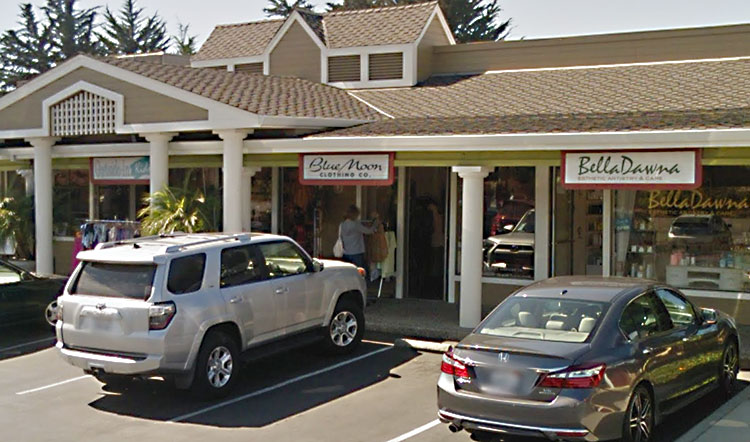By Jondi Gumz
With another $310 billion in relief available Monday, May 11, for small businesses devastated by shelter-in-place orders for COVID-19, there was another mad rush to apply online.

The Paycheck Protection Program, under the auspices of the Small Business Administration, provides small-business loans of up to $10 million to cover payroll and certain other expenses, or 2.5 times your total payroll expenses for the loan period. The interest on the loan can be forgiven if you are able to keep paying employees during the first eight weeks after you receive the loan.
The program had a rocky launch, with the SBA’s computer systems overwhelmed and reports that big banks such as JP Morgan Chase and Bank of America favored larger clients and limited applications to customers with pre-existing relationships. According ot the Washington Post, 80 percent of the small businesses that applied for a loan were still waiting for an answer as of April 17, the day after the program ran out of money, and many did not know where they stood.
In Santa Cruz County, 82 percent of businesses have nine or fewer employees. Many businesses were deemed non-essential by the Santa Cruz County Health Officer and ordered on March 16 to close to slow the spread of COVID-19.
What’s different this time, according to Rep. Jimmy Panetta-Carmel Valley, who supported the legislation, is that $60 billion is set aside for credit unions, community financial institutions, and other small institutions, which serve smaller businesses. Specifically, $30 billion is set aside for institutions with assets between $10 billion and $50 billion, and $30 billion set aside for institutions with assets under $10 billion.
“This will help to ensure that there is money set aside for smaller businesses,” said Panetta.
Locally owned Santa Cruz County Bank, which recently merged with Lighthouse Bank, has assets of $1.1 billion and is participating in the Paycheck Protection Program.
The bank posted this on its website: “We are accepting applications from customers who have an established banking relationship with Santa Cruz County Bank as of February 15, 2020 as well as businesses located in Santa Cruz, Monterey, Santa Clara and San Benito counties. This includes Lighthouse Bank customers who are now Santa Cruz County Bank customers as a result of our merger. Due to constraints within this government funded program and due to a significantly high volume of requests, it is not certain as to whether your request can be funded. Acceptance of any applications is not a guarantee of funding.”
Bay Federal Credit Union, based in Capitola, has more than $1.1 billion in assets but does not do business lending.
“We are in the process of getting certified to do SBA lending for the PPP funds; however, we are not there yet,” said Tonee Picard, Executive Vice President, Chief Development Officer. “We are working through the process to be able to offer this in the future.”
Santa Cruz Community Credit Union, with $121 million in assets, participated in the first round of “paycheck protection,” and found demand was high.
“We have reached our maximum limit for accepting any new Paycheck Protection Program applications,” the credit union said in a post on its website.
The Pajaro Valley Chamber of Commerce and Agriculture emailed members Monday about the loan program with a list of banks operating in the county.
Asked if the loan process takes the number of employees into account, the answer from Panetta’s office was: No, there is not a process that is based on business size. This legislation instead sets aside funding for smaller, community lenders which serve smaller companies.
It’s not clear whether banks and credit unions have to report how many Paycheck Protection loans they made and the average loan size.
The most recent application form is posted on the Treasury Department’s Cares Act resource page. Once you gather the necessary information, you should contact an SBA-approved lender. You can find one by plugging your Zip code into an online tool on the SBA’s website.
Borrowers are advised to apply online or by phone rather than in person. If you don’t already have an established banking relationship, your application will be handled on a first-come, first-served basis.
Usually, the SBA has a requirement requires that borrowers must be unable to obtain credit elsewhere.
That was dropped for the Paycheck Protection Program.
Borrowers are expected to certify themselves “in good faith” that they need the loan, “taking into account their current business activity and their ability to access other sources of liquidity sufficient to support their ongoing operations in a manner that is not significantly detrimental to the business,” according to Treasury Department guidance released April 23.
The new loans can cover payroll costs, employee benefits, mortgage interest incurred before Feb. 15, rent and utilities under lease agreements in force before that date, and utilities for which the service began before February. At least 75 percent of the loan must go to payroll, according to a regulation published April 2.
Payroll costs include salary wages, commissions and tips capped at $100,000 for each employee. It also includes benefits for vacation, parental leave, medical leave, sick leave and some other limited benefit categories.
The Paycheck Protection Program excludes sick and family leave, according to an April 6 fact sheet from the Treasury Department. Information on Cares Act tax credits is at irs.gov.